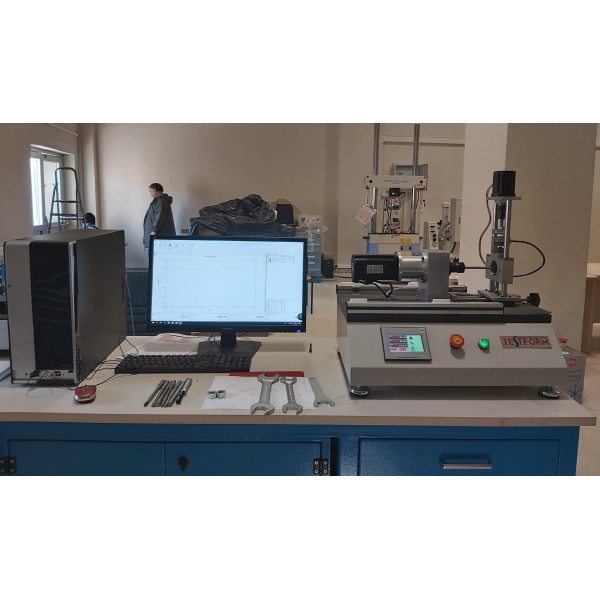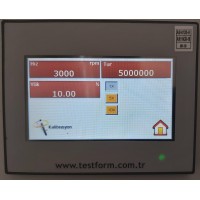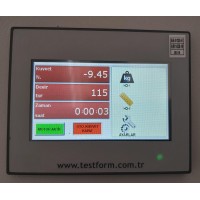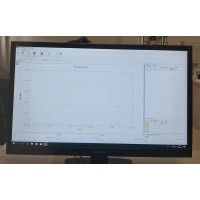Fatigue Testing - Rotating Bending Fatigue Test Equipment
- Product Code: FatigueTest-RB
Standard : ISO 1143, ASTM STP 1548, EN ISO 15630-1
Fatigue Testing
A fatigue test analyzes the behavior of materials while under stress of variable loads.
Typically, two loads apply to a material – a specified mass load (i.e., zero) and an alternating load.
These loads cycle and measure until the material fails.
This failure of a material under fatigue is called fatigue life.
Fatigue degradation (fatigue life) is not limited to metals, and most engineering materials (ceramics, composites, aggregates, etc.) are susceptible to fatigue damage.
The strength of materials is a measure of its ability to resist deformation, such as being stretched, bent, etc.
Description
• Different specimens show the influence of notching and surface quality
• Continuous adjustment of the load amplitude
• Automatically shuts down when the specimen fractures
Moving components and machine parts are often exposed to periodically fluctuating loads.
Even if the dynamic load is far below the static load capacity, this load can lead to fracture of the component after a long time because of material fatigue.
The fatigue strength and design strength of components are determined in fatigue strength tests or endurance tests.
The FatigueTest-RB device do the basic principles of fatigue strength testing and the creation of a Wöhler diagram.
In the experiment, a cantilever mounted and rotating cylindrical specimen is subjected to a single force.
The load on the specimen corresponds to a cantilever bending beam.
The specimen is subjected to a pure reverse bending stress and breaks after a certain number of load cycles because of material fatigue.
The necessary force is generated in the load application device by means of a spring balance and a movable support.
The load amplitude can be adjusted continuously using the preload of the spring balance by means of a threaded spindle.
An electronic counter registers the number of load cycles and displays it digitally.
The impulse for the counter is provided by an inductive proximity switch on the motor coupling.
The counter can also be used to measure the speed.
When the specimen breaks, the stop switch stops the electric motor automatically.
A protective cover protects against flying fragments.
Specimens with various fillet radii are included in the scope of delivery to demonstrate the notching effect and the influence of the surfaces.
By using the FatigueTest-RB system for data acquisition, the measured values can be transferred to a PC where they can by analysed with the software.
Technical data
Electric motor
- speed: 3000 RPM
- power: 0,75 kW
Load force
- 0…2000 N
Electronic dİsplay
- touch screen
- speed and target count can be changed on screen
Specimens
- material: steel Ck35
- 3 different fillet radii
230V, 50Hz, 1 phase
LxWxH: 840x410x600mm
Weight: approx. 31kg
Electronic data acquisition and evaluation of bending fatigue tests (fatigue strength test)
This system for data acquisition is an addition to the experimental unit FatigueTest-RB.
The software processes the measuring values for force and number of turns until the test sample breaks (number of load cycles).
The stress-number curve is calculated using these data and displayed in colours on the computer screen.
The curves can be saved and printed.




